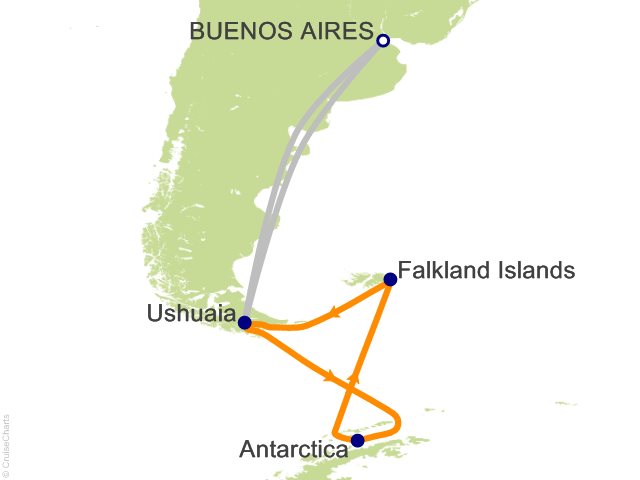Antarctic landscapes stretch as far as your eyes can see-a gorgeous world sealed by pristine snow and ice. Tabular icebergs, parts of the great shelves, tower above the waters, while ancient glaciers break off or 'calve' into blue-hued icebergs, sculpted magnificently by the wind and the sun. We have entered another world, one devoid of human influence. It is a haven for wildlife like whales, penguins, and seals. Just as the Antarctic icescapes change throughout its seasons, so does the wildlife. For example, whale populations begin to steadily increase from October through to January, both in number and range of species, and reach their peak in February and March-this is the best whale-watching opportunity. Around this time, the large amount of krill in the waters attract the most whales, in which multiple species swim over for a veritable feeding frenzy. If you arrive here in November, you might spot thousands of penguins courting and building their nests. December arrivals may have their hearts melted by cute penguin chicks, whereas March is usually filled with scenes of adolescent penguins maturing and finally learning how to swim. Other birds, which unlike penguins actually fly, vary throughout the summer months. Eager birdwatchers will be pleased to spot cormorants, shags, egrets, sheathbills, and many more. You have five days to take in every magical moment. Prepare for the unmatched scenery of Antarctica to leave you breathless. Gaze at distant white mountains during a stroll along the shore, or let a playful pair of Weddell seals delight you as they surface next to your small boat (RIB). They're checking you out, too, with their large inquisitive eyes. Or, hit the jackpot if the weather allows you to join optional activities such as kayaking, snowshoeing, or even camping. These are the kinds of experiences awaiting you in Antarctica. We make the most of each landing and choose the best sites from among numerous possible locations on the Antarctic Peninsula and its surrounding islands. The Expedition Team will provide ongoing lectures, be it on board the ship, ashore during landings, or even when navigating through icebergs and ice floes on cruises in small boats (RIBs). The topics range from glaciology and the impact of climate change on the Antarctic ice shelves to an explanation of the cold continent's history, stemming from the whaling era to its present status, under an international treaty. The Expedition Team's insights will prove invaluable throughout your journey, enhancing your sense of discovery a hundredfold. Think about having a chat with the Expedition Team's professional wildlife and landscape photographer for a few tips and tricks to improve the quality of your images. These skills will definitely come in handy if you choose to participate in one of the numerous Citizen Science programs. One of these is the HappyWhale project. Any photos you take of whales you spot can be uploaded to a global database that helps researchers track the migration patterns and overall health of the population. That way, aside from being precious memories, your photos contribute to the greater good of scientific research. ...
Read More




































 Track this Cruise.
Track this Cruise.  Favorite this Cruise and receive Price Alerts when the rates go up or down.
Favorite this Cruise and receive Price Alerts when the rates go up or down.












